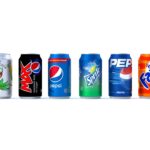Lab-grown salmon, also known as cultivated salmon, is being pushed everywhere as the future of seafood.
Instead of pulling out fish from the ocean, companies like Wildtype take a small sample of salmon cells and grow them in a tank filled with a nutrient broth designed to mimic what fish would get in nature.
Over time, those cells multiply and form tissue that looks and tastes like salmon. I was not happy to see that the FDA recently gave its first nod of approval to this technology (The Verge, 2025).
From a nutritionist’s perspective, the story isn’t so simple.
Yes, on paper, this is “real” salmon, in that it’s made of salmon cells, not plants like pea protein or soy. However, the growth environment is artificial, and many details about the additives, colorants, and growth factors used in production remain proprietary.
For example, growth-promoting compounds like fibroblast growth factor-2 (FGF2) have raised red flags in scientific literature for their potential link to uncontrolled cell growth and cancer (Barclay et al., 2005).
Although companies claim these substances are washed away before consumption, this has not been independently verified.
Nutritionally, we also don’t yet know if lab-grown salmon provides the same omega-3 fatty acids (EPA and DHA) that make traditional salmon such a powerhouse for heart and brain health.
Farmed salmon already varies widely in omega-3 levels depending on feed; with cultivated salmon, nutrient content may depend on how the cells are “fed” in the lab.
A 2020 review noted that the nutrient profiles of cultured meats can differ significantly from their natural counterparts and may require artificial supplementation (Fraeye, Kratka, Vandenburgh, & Lieven Thorrez, 2020).
Finally, there’s the question of processing. Traditional salmon is a whole food; cultivated salmon is a highly engineered product, grown with the aid of lab chemicals, stainless steel tanks, and filtration systems.
As nutritionists often remind patients: the more a food is processed, the more we should pause and ask about long-term impacts.
Until there’s transparency and independent nutritional testing, not just company-funded reports, it’s difficult to recommend lab-grown salmon as a true replacement for the real thing.
The Pitfalls of Lab-Grown Salmon: A Deeper Look
While companies are pushing lab-grown salmon as a futuristic solution to overfishing and environmental damage, from a nutritionist’s point of view, several pitfalls deserve closer attention before anyone should call it a healthy replacement for wild or farmed fish.
1. Questionable Nutrient Profile
The most significant nutritional benefit of salmon lies in its long-chain omega-3 fatty acids (EPA and DHA), essential for heart, brain, and eye health.
In wild salmon, these nutrients come from a natural diet rich in algae and small marine organisms. In farmed salmon, levels vary depending on feed quality.
With lab-grown salmon, those omega-3s are not guaranteed: they depend entirely on what is added to the growth medium.
Unless companies supplement with algae oil or synthetic DHA, the product will fall short of the nutritional value we expect from salmon (Fraeye, Kratka, Vandenburgh, & Lieven Thorrez, 2020).
2. The Ultra-Processed Factor
Lab-grown salmon is often marketed as “natural,” but in reality it is a highly engineered food product.
The cells are grown in steel bioreactors, nourished with a synthetic broth, and exposed to growth-promoting compounds. From a dietary standpoint, this makes it more comparable to an ultra-processed food than a whole food.
Nutrition science consistently shows that ultra-processed foods are linked to higher risks of obesity, cardiovascular disease, and metabolic disorders, regardless of calorie content (Monteiro et al., 2018).
3. Safety Unknowns: A Closer Look At FDA Approval
The FDA recently gave a green light to lab-grown salmon from Wildtype Foods, but here’s the catch: the agency based its approval entirely on safety data provided by the company itself, without running independent tests.
The salmon is already being served at a Portland restaurant, even though there are no finalized regulations specific to this type of food.
Wildtype used a loophole called “Generally Recognized as Safe” (GRAS), a rule meant for long-established food additives like salt or vinegar, not brand-new biotech proteins.
From a nutritionist’s perspective, that’s concerning.
Without independent testing, we can’t be sure about what’s in the product—whether growth-promoting compounds, colorants, or antibacterial agents might leave traces in the final fillet.
In short, the FDA’s approval doesn’t necessarily mean lab-grown salmon has been proven safe for long-term human health.
Instead, it means the regulator is trusting the company’s own word, something consumers should know before buying into the hype. (Public Health Policy Journal, 2025)
4. Transparency and Trust
Unlike a wild salmon fillet, whose nutritional composition can be measured and verified, much of the lab-grown salmon process remains a black box.
Companies are not required to disclose all ingredients in the growth medium, colorants used to achieve the pink hue, or any antimicrobial agents involved in cell culture.
For consumers trying to make informed, health-conscious choices, this lack of transparency undermines trust.
5. Cost and Accessibility
Finally, there’s the issue of accessibility.
Even if lab-grown salmon were nutritionally identical to wild salmon, it is currently only being served at upscale restaurants.
As with many food tech innovations, it risks becoming a luxury novelty rather than a true solution to nutritional inequality or global protein needs.
Bottom Line
From a nutritionist’s perspective, lab-grown salmon is an exciting scientific experiment but not a proven health food.
Until independent studies confirm its omega-3 content, micronutrient stability, and long-term safety, it should definitely be approached with skepticism rather than hype.
For now, if you want the full health benefits of salmon, your best bet remains wild-caught or responsibly farmed fish.
For a deeper look into processed foods and their link to colon cancer, please read: https://grosseating.com/processed-food-and-colon-cancer-risk/




